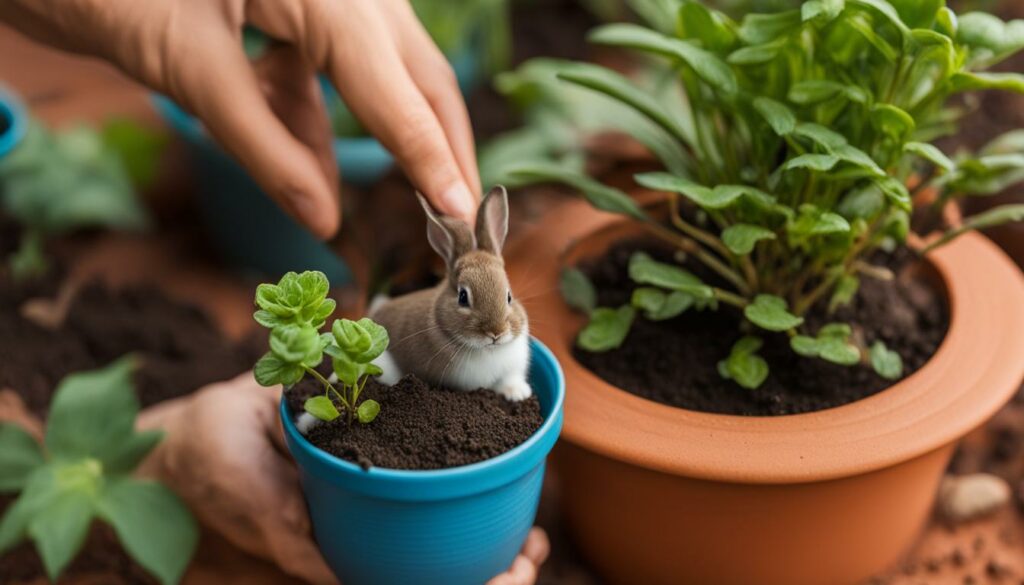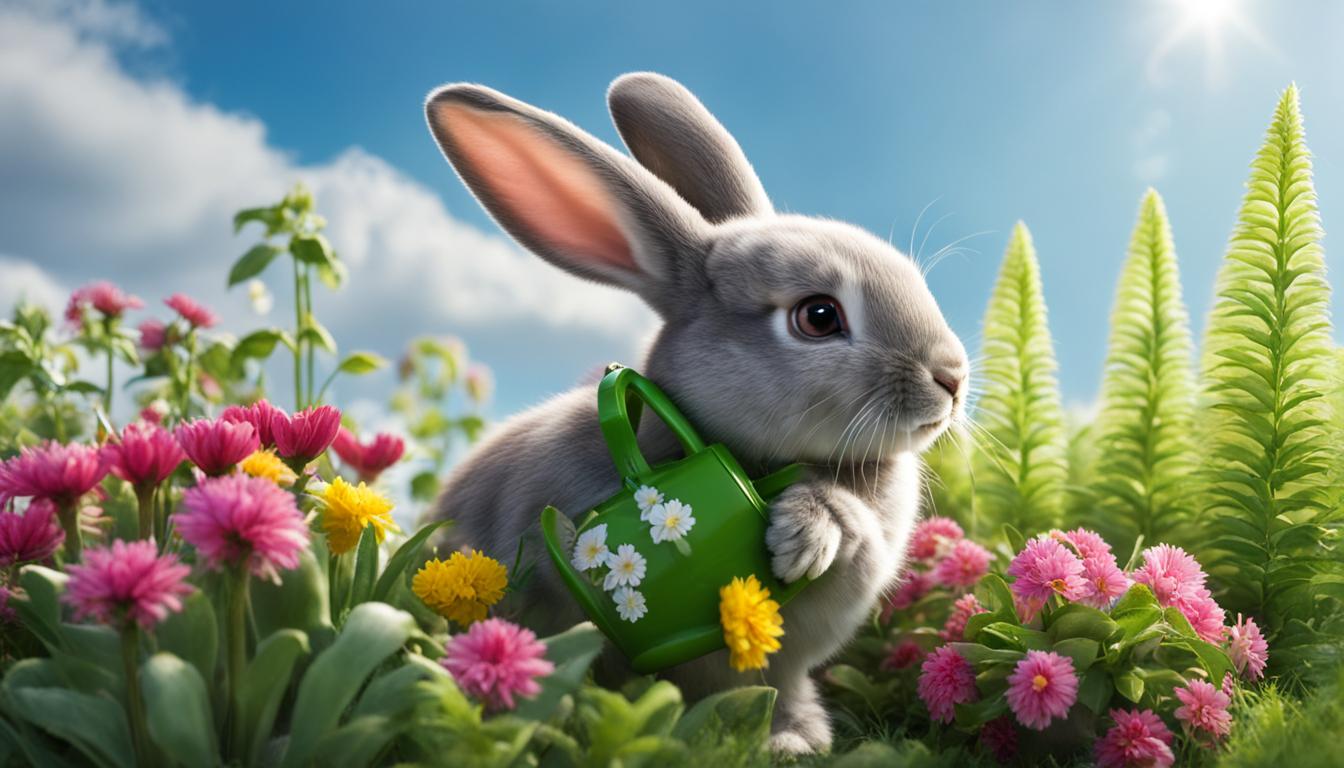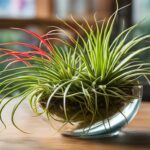Welcome to the Bunny Bellies Plant Care Guide! If you’re a plant enthusiast or a beginner looking to add some adorable succulents to your indoor garden, you’re in the right place. Bunny Bellies plants, also known as Monilaria obconica, are native to South Africa and have fluffy bunny ear-shaped leaves that are just too cute to resist. In this guide, we will cover everything you need to know to care for these charming plants and create a thriving oasis in your home.
Whether you’re an experienced plant parent or new to the world of gardening, Bunny Bellies plants are perfect for you. They are low-maintenance and require minimal attention, making them ideal for busy individuals who still want to enjoy the beauty of indoor plants. By following our care tips, you’ll be able to provide the right amount of light, water, and temperature for your Bunny Bellies plants to thrive.
So, get ready to embark on a journey of plant care and cuteness with our Bunny Bellies Plant Care Guide. From understanding what makes these plants so special to learning essential care practices, we’ve got you covered. Let’s dive in and make your plants happy!
What is a Baby Bunny Belly Plant?
Baby Bunny Belly plants, scientifically known as Monilaria obconica, are succulents native to South Africa. They are known for their charming bunny ear-shaped leaves and soft, fuzzy texture. These plants are master of disguise as their leaves evolve to mimic rabbit ears as they grow. Baby Bunny Belly plants are relatively low-maintenance, making them perfect for both experienced plant enthusiasts and beginners. If you’re looking to add a touch of cuteness to your indoor garden, the Baby Bunny Belly plant is a must-have.
Bunny Bellies Care Tips
When it comes to caring for your Baby Bunny Belly plant, there are a few tips to keep in mind:
- Light: Provide bright, indirect sunlight for your plant. Placing it near a window where sunlight filters through gently is ideal.
- Watering: Keep the soil evenly moist but not waterlogged. Water when the top inch of soil feels dry.
- Temperature: Baby Bunny Belly plants prefer temperatures between 60°F and 75°F. Avoid drafty areas and extreme temperature fluctuations.
- Humidity: Maintain a humidity level between 40% and 60%. Mist the leaves with water or use a tray with water near the plant.
- Fertilizer: Use a balanced, water-soluble fertilizer for houseplants during the growing season.
- Soil: Use a well-draining and nutrient-rich soil mix. Avoid letting water collect in the saucer beneath the pot.
- Pruning: Regularly prune to maintain a bushy shape and encourage healthy growth.
- Propagation: Expand your Baby Bunny Belly plant family through stem cuttings or division.
By following these care tips, you can ensure your Baby Bunny Belly plant thrives and brings joy to your indoor space.
How to Take Care of a Baby Bunny Belly Plant? [8 Tips To Follow]

Caring for a baby Bunny Belly plant requires attention and a delicate touch. Here are 8 tips to help you ensure your plant thrives:
1. Light Requirements
Baby Bunny Belly plants love bright, indirect sunlight. Place them near a window where sunlight filters through gently.
2. Watering
Keep the soil evenly moist but not waterlogged. Water when the top inch of soil feels dry.
3. Temperature
Baby Bunny Belly plants prefer temperatures between 60°F and 75°F. Avoid drafty areas and extreme temperature fluctuations.
4. Humidity
Maintain a humidity level between 40% and 60%. Mist the leaves with water or use a tray with water near the plant.
5. Fertilizer
Use a balanced, water-soluble fertilizer for houseplants during the growing season.
6. Soil
Use a well-draining and nutrient-rich soil mix. Avoid letting water collect in the saucer beneath the pot.
7. Pruning
Regularly prune to maintain a bushy shape and encourage healthy growth.
8. Propagation
Propagate through stem cuttings or division to expand your baby Bunny Belly plant family.
By following these essential Bunny Bellies plant care best practices, you can ensure that your baby Bunny Belly plant stays happy and healthy.
Light, Temperature, Soil, Watering, and Fertilizing Tips for Tradescantia Plants
When it comes to caring for your Bunny Bellies plants, it’s important to understand their specific needs. In this section, we will explore key factors such as light, temperature, soil, watering, and fertilizing that will help your plants thrive.
Light
Bunny Bellies plants prefer bright, indirect light. Placing them near a window where sunlight filters through gently is ideal. However, direct sunlight can scorch their leaves, so it’s important to avoid exposing them to intense rays.
Temperature
Maintaining the right temperature is crucial for the well-being of Bunny Bellies plants. They thrive in temperatures between 60°F and 80°F. While they can tolerate mild outdoor climates, they are sensitive to frost. Avoid exposing them to extreme temperature fluctuations and ensure they are kept in a comfortable environment.
Soil
The right soil composition is essential for the growth and health of Bunny Bellies plants. They grow well in all-purpose soil, but adding a moisture retainer like vermiculite or peat moss can help retain moisture, which is beneficial for these succulents. Ensure the soil is well-draining to prevent waterlogging and root rot.
Watering
Proper watering techniques are crucial for the overall health of Bunny Bellies plants. Keep the soil evenly moist, but avoid overwatering, as it can lead to root rot. In winter, when the plant enters a dormant period, reduce watering frequency to prevent waterlogged soil. As a general rule, water your Bunny Bellies plants when the top inch of soil feels dry.
Fertilizing
Bunny Bellies plants don’t require frequent fertilizing, but they can benefit from a half-strength liquid fertilizer during the growing season. This will provide the necessary nutrients for healthy growth. Be sure to follow the instructions on the fertilizer package and avoid overfertilizing, as it can harm the plants.
By following these tips, you can ensure optimal care for your Bunny Bellies plants and enjoy their adorable bunny ear-shaped leaves for years to come.
Conclusion
In conclusion, taking care of Bunny Bellies plants, also known as Monilaria obconica, is a delightful experience that adds a touch of cuteness to your indoor garden. These adorable succulents with their fluffy bunny ear-shaped leaves are perfect for plant enthusiasts of all levels, from beginners to experts.
By following the tips and best practices outlined in this Bunny Bellies Plant Care Guide, you can ensure the health and well-being of your Bunny Bellies plants. Remember to provide them with the right amount of light, water, and temperature to promote their growth and happiness.
During the winter months, it’s important to pay extra attention to your Bunny Bellies plants. Adjust their watering schedule to account for reduced moisture needs, and avoid placing them near cold drafts that could harm their sensitive leaves. If troubleshooting is needed, monitor for signs of overwatering, underwatering, or pests, and take immediate action to address any issues.
With proper care, Bunny Bellies plants will reward you with their charming presence and continue to bring joy to your indoor garden throughout the year. Create a flourishing oasis in your home by nurturing these delightful succulents and enjoy the beauty they add to your space.
FAQ
What are Bunny Bellies plants?
Bunny Bellies plants, also known as Monilaria obconica, are adorable succulents native to South Africa. They have fluffy bunny ear-shaped leaves and a soft, furry texture.
How do I take care of a Baby Bunny Belly plant?
Caring for a Baby Bunny Belly plant requires attention and a delicate touch. Here are 8 tips to help you ensure your plant thrives:
– Place the plant in bright, indirect sunlight.
– Keep the soil evenly moist but not waterlogged.
– Maintain a temperature between 60°F and 75°F.
– Maintain a humidity level between 40% and 60%.
– Use a balanced, water-soluble fertilizer during the growing season.
– Use a well-draining and nutrient-rich soil mix.
– Regularly prune to maintain a bushy shape.
– Propagate through stem cuttings or division to expand your plant family.
How do I take care of Tradescantia plants?
To take care of Tradescantia plants, follow these tips:
– Place them in bright, indirect light.
– Keep the temperature between 60°F and 80°F.
– Use all-purpose soil with added moisture retainer.
– Keep the soil evenly moist, especially in winter.
– Use half-strength liquid fertilizer during the growing season.
– Regularly prune to maintain a bushy appearance.
– Propagate through pinched-off leaf cuttings or rooting cuttings in water or soil.





